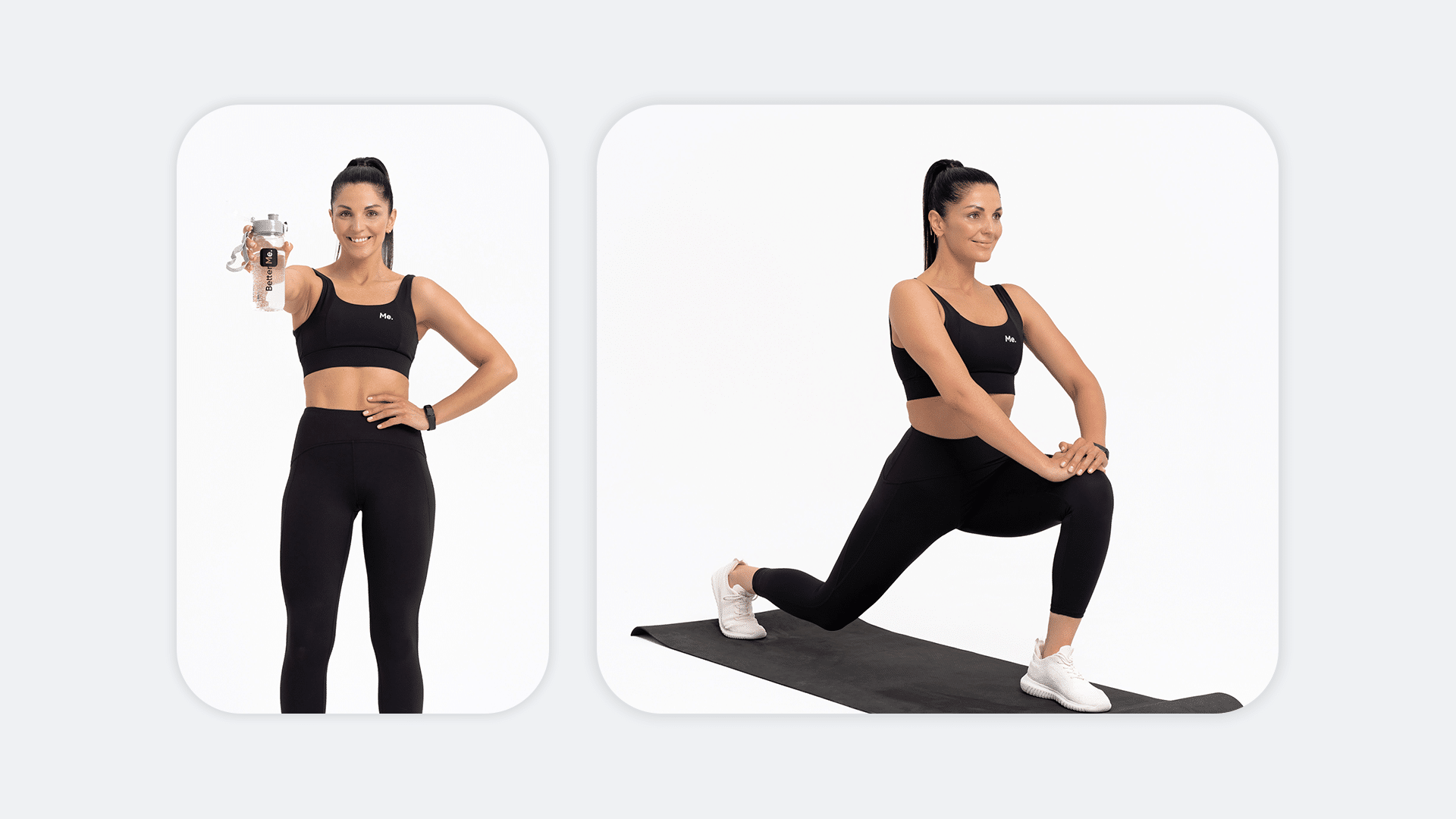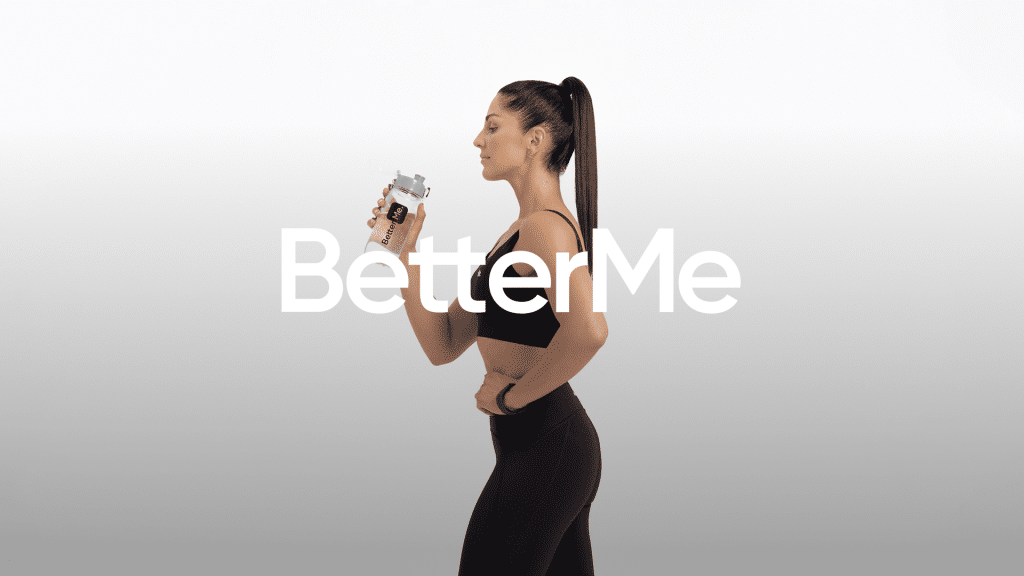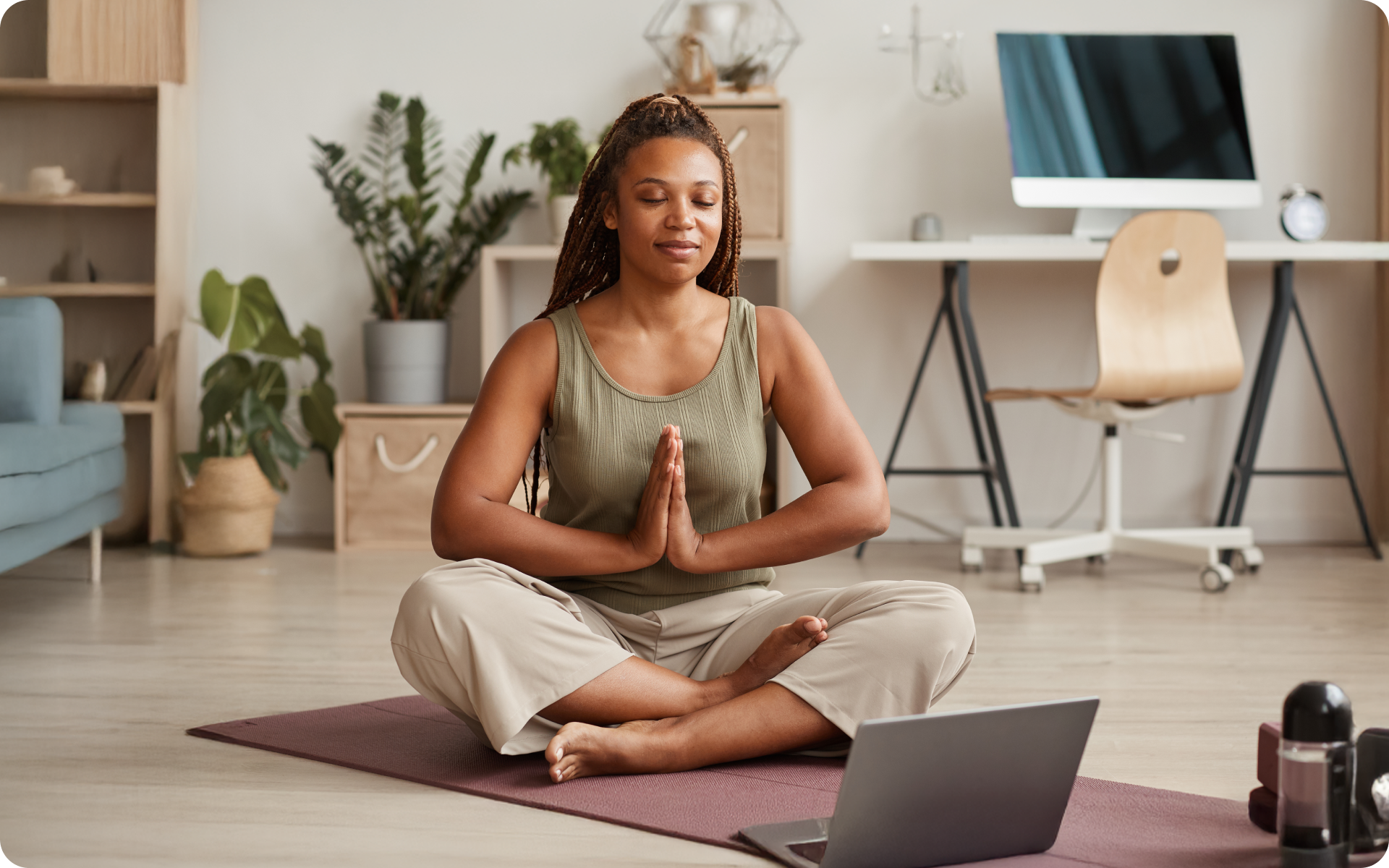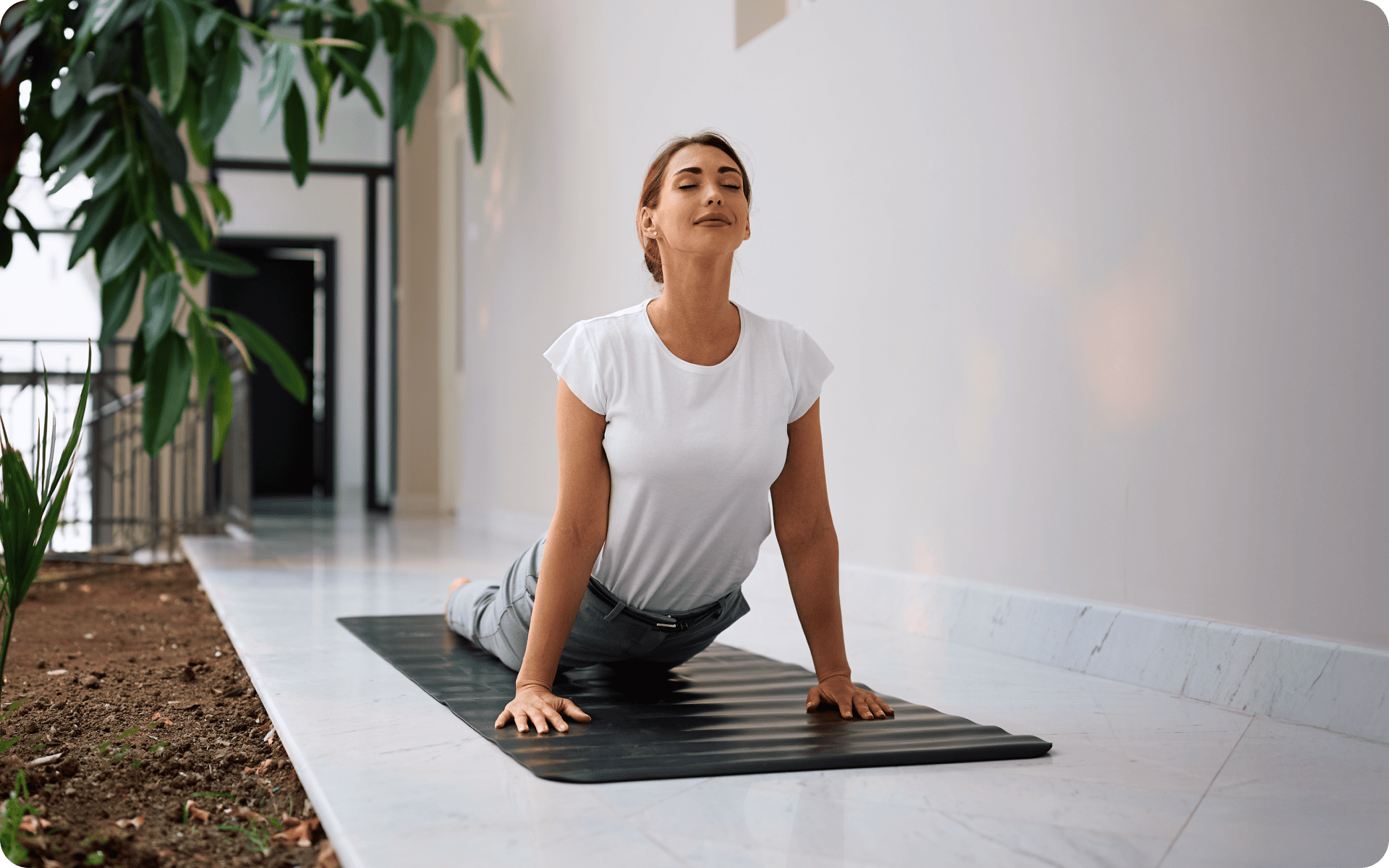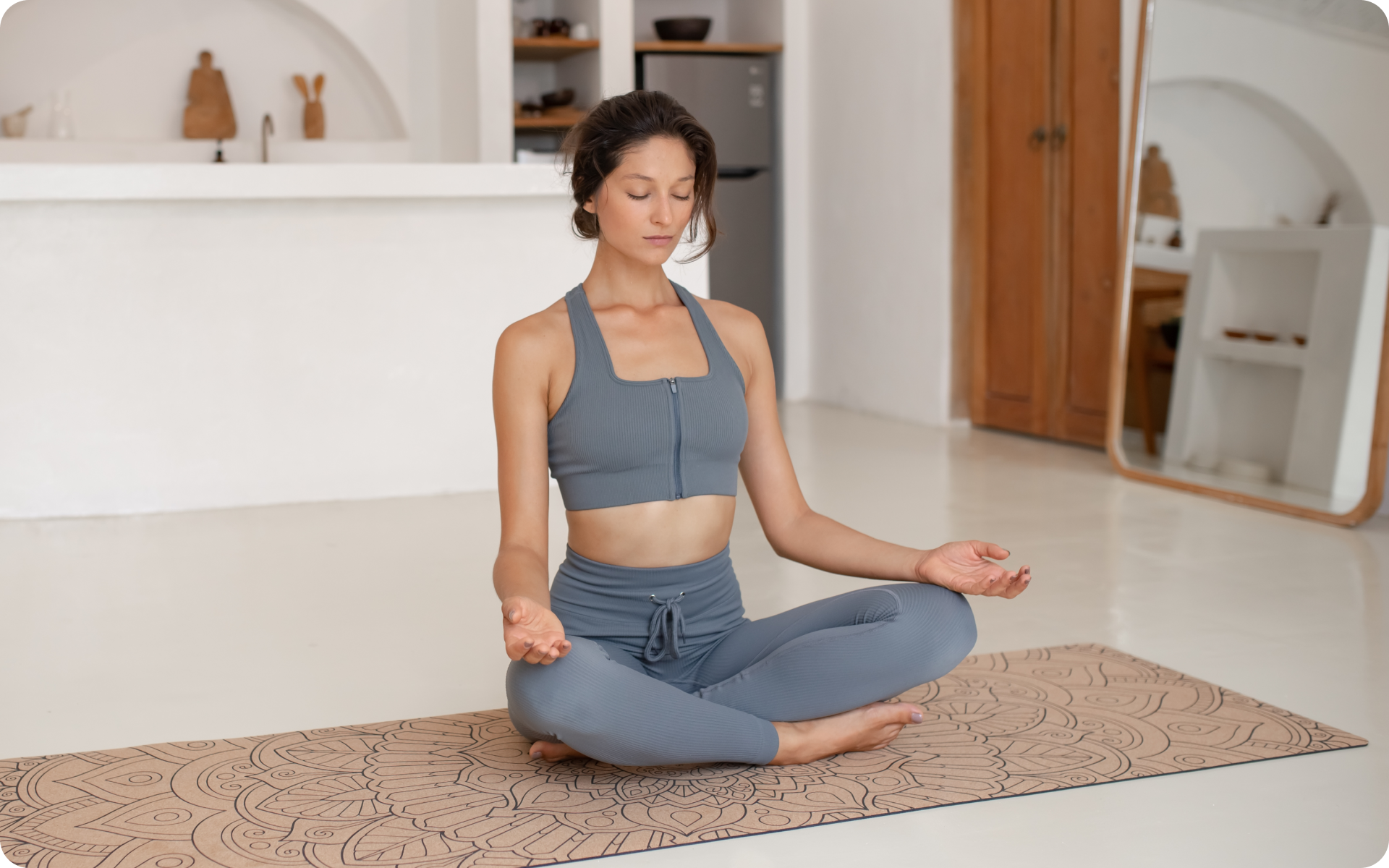Do you suffer from constant muscle tension and stiffness? In a world dominated by the chaos of modern life, we often neglect our physical forms. It is about time you try somatic movement, the latest buzz among health enthusiasts.
Compared to traditional exercises where you focus on external movements, somatic techniques allow you to focus internally and consciously feel each move you make. These movements offer an extraordinary pathway to reconnect with our bodies, liberating us from daily stress.
These movements may help you establish an effective mind-body connection and develop a harmonious union between mind and body. Join us as we explore the basics of somatic movement therapy and how it benefits your well-being.
What is Somatic Movement?
Somatic movement means you make conscious body movements by focusing on each exercise, increasing internal awareness. The purpose is to listen to your body and sense any signal your body makes regarding pain or discomfort (1).
The word Somatic comes from the Greek word Soma, meaning body. Somatic means “of or relating to the living body.”
Somatic Education was first coined by an educator, Thomas Hanna, who used the word in his book, Bodies in Revolt: A Primer on Somatic Thinking. He used the word somatic to refer to techniques people use to increase bodily awareness.
Since somatic is an umbrella term for healing techniques, it is often associated with somatic yoga, somatic therapy, somatic psychology, or somatic education.
What is the Meaning of Somatic Movement?
The purpose of the somatic movement is to slow down and focus on what is going on inside. We often ignore the signals our bodies send and focus on external aspects of our bodies. While that is important, focusing on our internal body is crucial.
Ignoring our internal cues makes us feel drained and exhausted by the end of the day. We tune in to how our muscles feel in any given movement or moment through somatic movement. This allows us to feel the tension in our muscles and other tissues that we’ve been conditioned to ignore.
Also, over the years, our nervous system conditioned our muscles to be tight and respond in certain ways due to our habits, stress, or injuries. Over time, this may lead to muscle tightness, soreness, and pain (1). Doing somatic movement helps those muscles relax and release the pent-up tension. This improves overall wellness.
Now you may be wondering what is the difference between health and wellness. Health refers to physical health, whereas wellness refers to emotional, spiritual, social, and physical health.
How to Do the Somatic Movement?
The somatic movement must be done very slowly. This is because our nervous system reacts differently when we do things slowly (7). Doing fast activities prevents us from learning new things, making us reinforce the movements we usually do.
Also, it is vital to perform somatic movement training consciously by being aware of what is happening on the inside. We need to focus internally to be able to learn something new.
The overall idea is to unlearn and re-learn. When we perform these somatic movements slowly with complete attention, we learn something new each time. As opposed to other exercises that focus more on achieving a certain number of reps, somatic movement is all about quality.
If you wish to reach into the deep crevices of your mind, take yourself out of the mental loop, regain balance, infuse yourself with optimism, and cultivate compassion – BetterMe: Meditation & Sleep app is exactly what you need!
What is an example of a Somatic Practice?
Somatic movement may be synonymous with somatic stretching, where we move our body slowly to release muscle tension. The somatic extension is based on pandiculation and is done unintentionally and naturally, just like we stretch our bodies by getting up after sitting for a long time (2). This allows us to focus on our bodies attentively and feel the stiffness leaving our bodies.
Pandiculation can be explained as a neurological response of releasing built-up muscle tension naturally. An example could be animals and humans arching their backs to stretch.
One of the simple somatic movement examples includes standing consciously. To do this:
- Stand up straight on the ground with your feet rooted to the floor.
- Bring awareness to your foot muscles, noticing how they grip the floor. Contract and release the foot muscles.
- Take deep breaths, observing how your abdominal muscles expand and contract. Focus on the sensations of your abdominal muscles.
- Scan your body from bottom to top, noticing how different muscles feel.
- Pay particular attention to areas of tension and discomfort in your body.
- Work on releasing tension by contracting different body parts.
What are some Somatic Movement Exercises?
Somatic release exercises help you become hyper-aware of your internal body and combat built-up muscle tension. The purpose of these bodily movement exercises is to make people stop and focus on their movements.
Most of our movements are unintentional, including mindful walking when we aren’t counting the steps. Some of the most common somatic exercises are:
Somatic Washcloth
Washcloth is a somatic exercise that helps release muscle tension and promote relaxation in the body (8). It is named as it mimics the motion of you wringing a washcloth. Here’s how you can perform washcloth:
- Find a quiet and comfortable space where you can perform a somatic routine.
- Lie down on your back. You can use a yoga mat or a soft surface like a rug.
- Extend your legs and rest your arms by your sides while lying down. Relax your body in a way that you feel the ground beneath.
- Begin by focusing on your feet. Slowly and gently wiggle your toes, flex, and point your feet a few times. Pay attention to any areas of tension in your feet.
- Continue moving slowly up through your body. Imagine your body is like a washcloth being gently wrung out.
- Wring your body and imagine tension releasing from each part as you wring it.
- As you move up your body, wring your shoulders, arms, and head slowly.
- Ensure you wring each body part slowly and gently. You can rotate your ankles or wrists slowly or gently roll your shoulders.
- Do this exercise until you feel all tension has left your body.
- Once you have wrung out your whole body, lie still for a moment, allowing the relaxation to settle in. Take a few deep breaths, and when you’re ready, slowly sit up and return to a seated position.
Note: Remember to breathe deeply and not hasten to perform these movements. Try to complete each action mindfully to immerse in the somatic exercise fully.
Also, pay attention to sensations. Notice any areas of tension, stiffness, or relaxation. Allow yourself to experience the movement without judgment and the release fully.
Somatic Dance
Somatic dance is also another way to form a deep mind-body connection. Dance therapy utilizes movements as a way to heal, especially for those who are dealing with challenging events. Considering how it helps individuals to cope with their emotions, they must perform it under the guidance of a trained therapist. A certified dance therapist can help you navigate through your feelings and allow your body to express everything that is pent up!
To perform somatic dance:
- Find an open or comfortable space where you can move freely. You may play some calming music to enhance your experience.
- Begin with gentle stretching to prepare your body for movement.
- Bring awareness to your different body parts slowly. Notice any areas of tension or sensations. This will help you become more present and connected to your body.
- As the music plays, allow your body to lead the way. You don’t need to follow a particular choreography. Your instructor can help you to pick the moves. Allow your body to respond to its impulses and desires.
- Pay attention to your breath as you move. Let your breath guide your movements. Deep breathing can help you stay grounded throughout the dance.
- Explore various movements, such as flowing, spiraling, and pulsating.
Somatic dancing is characterized by improvisation. Discover new steps and movements instead of following predetermined steps. Your dance therapist can help you to explore new techniques.
Meanwhile, pay attention to the physical sensations you experience while dancing. Notice how your body feels, where the movements originate, and how they flow through you.
As you conclude your somatic dance, take a moment to stand or sit still and reflect on your experience. Observe any shifts in your body, emotions, or mindset that may have occurred during the practice.
Note: Somatic dancing is a deeply personal practice, and it may take time to fully tap into your inner movements and emotions. Be patient with yourself, and approach the procedure with self-compassion and non-judgment.
Read more: Sound Meditation: The Healing Power Of Sound.
Alternatively, you can also perform the following exercise:
- Find a quiet and comfortable space.
- Lie on your back with your legs extended.
- Close your eyes and twist your right leg outward, arching your lower back.
- Twist the right leg inward, letting your lower back flatten.
- Repeat this pattern on both sides at least five times.
- Observe how your leg movements affect your lower back.
- Rotate both legs inward and outward in a pigeon toe and duck foot pattern. Practice this five times.
While these were some basic somatic exercises, you can also try the following systematic techniques to achieve mindfulness.
Rolfing
Rolfing was developed in the 60s and has been used to treat chronic muscle pain and balance issues. It’s a holistic method of regaining structural balance in the body through muscle and fascia manipulation. Rolfing helps the body’s natural mechanisms to take over and correct these imbalances naturally (3).
Rolfing is usually done in 10 sessions where a Rolfing practitioner addresses misalignment and pain points throughout the body. Compared to traditional massage techniques, where a masseuse addresses certain pain points, a Rolfer massages muscles in the entire body to adjust misalignment and structural imbalances.
Body-Mind Centering
Body-mind centering (BMC) is an integrated approach to understanding and connecting with the body and mind. Bonnie Bainbridge Cohen developed it and combined anatomy, physiology, and somatic psychology principles to explore the relationship between the physical body and the mind (9).
Body-mind centering aims to help people become more aware of their internal selves through experiential movement, touch, and awareness to facilitate a deeper understanding of the body-mind connection and promote mental and physical well-being. Human bodies hold a wealth of knowledge that can influence their thoughts, emotions, and overall well-being.
Body-mind centering helps individuals enhance their movement capabilities and posture by releasing tension, improving alignment, and finding greater efficiency in their physical activities.
Alexander Technique
Alexander Technique is another somatic practice that can improve your posture by focusing on sensory awareness, self-perception, and conscious movement. Named and developed by Frederick Matthias Alexander, the Alexander Technique identifies body misalignment and rectifies poor posture. The technique emphasizes the integration of mind and body in everyday activities.
According to the UK National Health Service, Alexander Technique treats chronic back and neck pain and helps individuals cope with Parkinson’s disease (4).
This technique is taught in private lessons where teachers observe their students’ gait. They provide verbal and manual guidance to help individuals better maintain their posture and move with better poise.
Feldenkrais Method
Feldenkrais’s method also helps you develop a strong mind-body connection. Moshé Feldenkrais developed it during the mid-20th century (10).
Like Alexander’s technique, the Feldenkrais method also helps individuals learn graceful and efficient movement. Although there are limited studies on this method, many proponents claim that this method may benefit people with autism or multiple sclerosis.
Laban Movement Analysis (LMA)
Last is the Laban Movement Analysis, a method used to observe, describe, and understand human movement. Developed by Rudolf Laban, Laban Movement Analysis helps us break down and analyze how we move in various ways and what those movements convey (11).
For example, we see a ballet dancer glide through the stage. Every dancer is unique and does their performance.
Laban Movement Analysis looks at four components: body, effort, shape, and space. It examines how the body moves, including its form, posture, and the way it takes up space. For instance, a person might move with big, expansive gestures or small, contained movements.
The technique also focuses on the qualities of movement. Movements can be light or strong, free-flowing or tense, quick or sustained. Shape refers to the patterns and forms that movements create in space. Movements can be linear, curved, twisting, or a combination of these shapes.
Laban Movement Analysis also considers how movements relate to the surrounding space. It examines whether movements are directed forward, backward, upward, downward, or sideways, as well as how much space a person occupies with their movements.
By observing and analyzing these components, this Analysis helps people gain insight into their intentions, emotions, and personality traits through their movements.
Whether you want to learn how to exit the spiral of self-harming behavior, overcome anxiety, cure insomnia or simply give yourself the time and space to bliss out and soak up the moment of complete peace and quiet – BetterMe: Meditation & Sleep app is exactly the tool for that! If you don’t take care of number one, who will?
How is Somatic Movement Different from Yoga?
Yoga is the primary exercise we do when we have to practice mindfulness. While yoga enhances relaxation, it is not always somatic. When a person is not following the instructions of yoga teachers, they may ignore their cues and twist their bodies into uncomfortable poses.
Somatic yoga is all about listening to our body and focusing inward. It allows us to feel every sensation and consciously let stiffness exit our bodies. Somatic yoga comprises small and slower movements with the eyes closed. It includes guided breathing, meditation, positive affirmations and moments of relaxation (12).
Somatic movement yoga helps us stabilize our root chakra, which is located at the base of our spine. Root chakra imbalance leads to discomfort, tension, and muscle stiffness. Practicing Root Chakra Yoga Poses, such as Balasana, Savasana, Warrior I, or Warrior II, helps us tune into our bodies and achieve a well-balanced life.
Why is the Somatic Movement Important?
Somatic movement has become popular recently due to its many health benefits. Let’s check out why incorporating bodily movement in your morning routine checklist benefits your mind and body.
Enhances Emotional Awareness
The essence of the somatic movement is to significantly improve our mind-body connection and be more aware of our senses. Certain emotions we experience due to a distressful event and stress may get repressed and stored in our bodies (13).
Practicing somatic movements helps us acknowledge those emotions. According to a study, practicing Laban Movement Analysis increases our postural awareness and allows us to enhance emotional resilience (5).
Relieves Pain
Mindfully focusing on areas with tension, you gain heightened awareness about pain’s origin. This allows you to do somatic exercises that help you improve your posture and make certain changes to your body language to reduce pain.
A study found that individuals who practiced the Rosen Method, a type of somatic exercise, experienced less fatigue and body pain (6). It also revealed that individuals who practiced the Feldenkrais method significantly benefited from chronic back pain relief.
Read more: The Power Of Sound Therapy: Here’s How To Use Ancient Tibetan Singing Bowl Healing And Meditation Bells.
Frequently Asked Questions (FAQs)
What is somatic yoga?
Somatic yoga is the type of yoga in which you pay complete attention to each movement and do the poses slowly and gently. This allows you to concentrate on your body sensations and identify areas of discomfort. It should be practiced with a certified yoga teacher.
What are the four somatic practices?
The four somatic movement practices are Rolfing, Body-Mind Centering, Alexander technique, and Feldenkrais method. It also includes Laban Movement Analysis.
Is meditation a somatic practice?
Meditation can be a somatic practice, as it helps you focus on your internal bodily sensations wholeheartedly and while staying connected to your breathing. Meditation is somatic as long as you do not rush through the process and do the practice gently.
The Bottom Line
To summarize, somatic movements offer a transformative approach to understanding and enhancing physical and mental well-being. Practicing bodily movement may allow you to combat pain, relieve muscle tension, and get better at performing day-to-day tasks easily. Through the gentle and mindful exploration of movements, somatic exercises may help practitioners tread a journey of self-discovery.
As you continue to delve into the endless realm of somatic practices, it opens doors to healing, progress, and self-realization. If you are new to this, consult a somatic movement expert for expert advice and tips to relieve your body.
Also, you should contact a mental health professional if you experience overwhelming emotions or feelings interrupting your daily life. They can guide you through the journey through customized interventions.
DISCLAIMER:
This article is intended for general informational purposes only and does not serve to address individual circumstances. It is not a substitute for professional advice or help and should not be relied on for making any kind of decision-making. Any action taken as a direct or indirect result of the information in this article is entirely at your own risk and is your sole responsibility.
BetterMe, its content staff, and its medical advisors accept no responsibility for inaccuracies, errors, misstatements, inconsistencies, or omissions and specifically disclaim any liability, loss or risk, personal, professional or otherwise, which may be incurred as a consequence, directly or indirectly, of the use and/or application of any content.
You should always seek the advice of your physician or other qualified health provider with any questions you may have regarding a medical condition or your specific situation. Never disregard professional medical advice or delay seeking it because of BetterMe content. If you suspect or think you may have a medical emergency, call your doctor.
SOURCES:
- A Brief Intro to the World of Somatics (2020, healthline.com)
- Pandiculation: nature’s way of maintaining the functional integrity of the myofascial system (2011, pubmed.ncbi.nlm.nih.gov)
- 10 Ways to Keep Your Fascia Healthy so Your Body Moves Pain-Free (2020, healthline.com)
- Alexander technique (2021, nhs. uk)
- A Somatic Movement Approach to Fostering Emotional Resiliency through Laban Movement Analysis (2017, ncbi.nlm.nih.gov)
- Better or Worse: a Study of Day-to-Day Changes over Five Months of Rosen Method Bodywork Treatment for Chronic Low Back Pain (2013, pubmed.ncbi.nlm.nih.gov)
- Parasympathetic Nervous System (PSNS) (n.d., my.clevelandclinic.org)
- Washcloth (2018, somaticmovementcenter.com)
- BODY-MIND CENTERING® (n.d., bonniebainbridgecohen.com)
- Feldenkrais Method (2016,.goodtherapy.org)
- Laban Movement Analysis (n.d., labaninstitute.org)
- What is Somatic Yoga? (n.d., denizaydoslu.com)
- The Benefits of Somatic Movement (n.d., totalsomatics.com)
